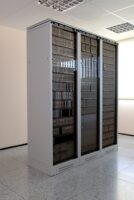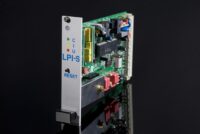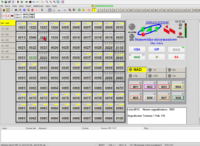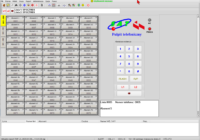Application
The SAT dispatching system is designed to realize high-speed, direct and emergency-dispatching and telephone communications. Importantly, it can work with any type of subscriber telephone exchanges. In addition, the system has been adapted to work in extremely harsh industrial conditions – for example, in mining, petrochemical, chemical and other plants.
Moreover, SAT can be used in environments with high noise levels, high humidity, salinity or dust. In addition, it works well in areas at risk of explosion of methane, other gases and fuel vapors (explosion groups I and IIB according to PN-EN 50014).
Key Advantages
One of the main advantages of the system – especially compared to earlier solutions such as TEDAR or STAR – is the use of distributed control systems. This has resulted in full modular flexibility. In other words, the system can be built in various configurations – from a few to 192NN – and can be freely expanded by networking multiple units.
Equally important, the modular structure of the system has significantly increased its reliability. In the event of failure of one module (with an OSA controller), the others operate without interference. In addition, one of the OSA controllers in the SAT rack acts as a master.
Integration with other systems
The SAT system can also integrate with other devices, such as metanometric or fire control panels or visualization systems. This integration takes place via an external RS485 bus through BUZ external device buffers, or using Ethernet.
Multi-user support
It is worth noting that SAT is equipped with four independent acoustic tracks. This makes it possible for four dispatchers to work simultaneously. In addition, it is possible to connect computers that act as observation stations – but do not have the function of conducting conversations.
SAT-A– (alarm) version equipped only with programmable intrinsically safe PST-type sirens
SAT/N-A– (non-intrinsically safe alarm) version equipped only with programmable PST-N type sirens
SAT-T– (telephone) version equipped only with intrinsically safe TIG-S telephones
SAT/N-T– (non-intrinsically safe telephone) version equipped only withTPN-S type industrial telephones
SAT-Z– (integrated) version equipped with both PST signaling and TIG-S telephones
SAT/N-Z– (integrated non-intrinsically safe) version equipped with both PST-N sirens and TPN-S telephones
Collaboration
With all types of telephone exchanges.
Power supply
Buffer – 48 or 60V DC.
Capacity
- any in modules of – 16 NN each
- standard – n x 192 NN
Station equipment
- SSI-SAT line-separation stand
- computerized dispatching stations with call recorders
- PDK-SAT dispatcher desks – up to 3 pcs.
- SU-SAT maintenance station – 1 pc.
- SO-SAT observation post – 1 piece.
Underground equipment
- programmable signallers PST industrial phones
- TIG intrinsically safe industrial telephones
- MCCD-01 downhole concentrators.
SAT technical data
| SSI-SAT racks feeding | 48 V DC buffered |
| Power drawn form the supply source 48 V | 3 W x No. Of subscribers |
| Power supply of dispatchers’ desks | 230 V AC guaranteed |
| Internal power supply | +5, +12, -48 V |
| Maximum number of dispatcher’s communication lines | 1040 |
| Levels of conversation signals | 0.775 V (0dBm) |
| Maximum voltage in non-spark safe subscriber’s line | 41 V DC |
| Maximum voltage in intrinsic subscriber’s line | 41 V DC |
| Current efficiency of exchange subscriber’s equipment | 30 mA |
| Current efficiency of output circuit of LPI unit | 35 mA |
| Current efficiency of output circuit of LPI unit | ExiaI/IIB acc. to PN-EN50014 |
| Protection degree of PST casing | IP65 |
| Protection degree of MCCD-01 casing | IP54 |
| Operating temperatures range | from +5 °C to +40 °C |
Electrical parameters of line units LPI and LM
| Current from -48 V input | max. 50 mA |
| Current from +12 V input | max. 50 mA |
| Telephone line input resistance | max. 600 Ω |
| Telephone line impedance for 1000 Hz | 600±50 Ω |
| Direct voltage at unloaded line output | max. 41 V |
| Maximum value of direct current in line | 45 mA |
| Level of DTMF signal at line output | 4±1 dB |
OSA technical data
| Power supply voltage | +5 V |
| Power consumption | max. 100 mA |
| RS485 main conduct protocol | MODBUS |
Parameters of KTD – computer dispatcher’s communication card
| Power supply voltages | +5 V i +12 V |
| Current from +5 V/12 V input | max. 100 mA/100 mA |
| Number of control circuits | 1 |
| Number of telephone line inputs | 2 |






